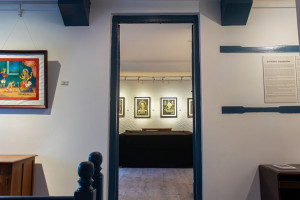Arts
Using art to create and tell stories of identity and equality
Srijanalaya and the UN Women Nepal’s ‘We for Us’, a digital exhibition, gives a glimpse of two gender equality activists’ lives.
Srizu Bajracharya
Oftentimes when you view art exhibitions at art galleries, the layout of the galleries and the placement of the artworks help set the mood of the exhibition. The coherence of the two factors is what gives the ultimate experience to the visitors.
But when you shift the exhibition online, navigating the exhibition typically becomes a challenge. This is the very challenge viewers will face when it comes to the online art exhibition 'We for Us'. This confusion about understanding the layout of the exhibition could result in people abandoning it midway, but those who do explore and get past the initial challenges will find themselves immersed in a one-of-a-kind exhibition.
Put together by UN Women Nepal and Srijanalaya (an NGO that creates safe learning spaces through the arts), the digital exhibition is curated by Sanjeev Maharjan and features works of artists Muna Bhadel, Pranav Narayan Manandhar, Subima Shrestha, and Uma Bista.
At the heart of the exhibition are the stories of Rekha Devi Yadav, a community-based justice leader from Sarlahi, and Gauri Devi Bista, a women’s rights activist from Doti.
The two women lead ordinary lives, but it is their endeavours that are heroic. The exhibition reveals how they have pulled themselves through hardships to be where they are today and the artworks also successfully drive home the point of how important it is for the two women to help other women.
Rekha is a member of the local Judicial Committee of Brahmapuri Municipality, and for over a decade, she has been advocating for women rights in her community. Gauri is the secretary of the Reflect Circle Women’s Group and a member of the Women Human Rights Forum in Dipayal Silgadhi Municipality-7. In the past, both these women have worked with the UN Women Nepal in various capacities to address gender-based issues.
Grounded in telling the hardships of women across the country, the exhibition’s curator and the four artists' works focus on giving the audience a glimpse of Gauri and Rekha’s way of life to subtly and also poignantly touch on the discourse of Nepali women’s access to justice.
In order to make people aware of the conventional gender norms and how these norms incite violence, as well as inspire them to challenge the status quo—art, culture, the media, and civic discourses have a significant role to play.
.png)
In one audio recording that photographer Uma Bista compiled in ‘Our Lives Our Journey’, Gauri, who has been helping build the capacity of women in her community by providing them counselling on gender-related issues, can be heard saying, "The hustle is necessary to live a life of dignity. They’ve accepted me because I have done something with my life." The testimonials as recordings reveal how Gauri believes that women need to stand up for themselves to create a society free of gender and identity-based discrimination.
The artists featured in the exhibition have done a commendable job in making sure the artworks represent the reality of Gauri and Rekha. The art and the character’s experience are entwined meticulously.
Muna Bhadel’s performance art video, ‘And now I am ready, 2021’, with its use of shadows and light and the background noise of people talking has a sombre feel to it. Muna tries to portray Gauri’s journey of finding her own ground and identity amidst all the judgements of the society around her. Muna starts right at the time when Gauri’s hair was shaved without her consent by the people from her community when she became a widow. One can perhaps also see this as a commentary on how customs like these work to undermine a woman's identity. A woman is never a woman first. A woman’s identity is often dictated by her relationships—she is either someone's daughter or a wife or a mother or a widow. By the end of Muna’s video performance, which builds as a montage to reveal Gauri’s journey, viewers find themselves relieved when Muna as Gauri finally breaks out of what is a suffocating veil.
Subima Shrestha’s classical performance stands out in the exhibition for using music beyond the convention of its genre. She uses a poem, subtle music, and a deuda song sung and composed by Gauri (to express her pain of not being understood) to provide an emotional rendition of how the two women see their lives.
In ‘Daughters’ ( part of Pranav Narayan Manandhar and Subima’s multimedia video—Voice, 2021), Subima and Rekha paint each other’s hands with intricate designs using white paint. Subima uses a poem as a voiceover to tell that ‘no religion has ever provided women ownership of their last names.’ She sarcastically emphasises that women are meant to be free, but every language and culture sets norms that restrict women. These accounts, though don’t tell much about how Rekha has helped women in her community, gives insight into the kind of person she is and what motivates her to speak for the women in her community.
Pranav’s music in Subima’s performance in the third video of 'Voice, 2021' is poignant and thick with emotion—never too loud and dominating. His music complements and falls and rises with the realisation of the anticipated viewers. It is almost like he understands that the music is meant to grip and compliment people’s sentiment of what they feel as Subima performs.
What’s also interesting to see in the exhibition is the collaboration between artists and how they (if you already know their work) go beyond their own mediums to make people empathise with women like Rekha and Gauri, whose tireless efforts to bring gender reforms do not get coverage in the mainstream media. Uma doesn’t just stick to photography to tell Gauri and Rekha’s story. She even illustrates her story with visuals, poems, and sounds. It’s the same with Subima, who, in the exhibition, uses different props and elements to make her storytelling more impactful.
There’s much to interpret from the exhibition—nothing is just as we see it. One needs to delve deeper and not settle with what meets the eye. This is especially the case with Uma’s photographs, which at first look are hard to understand. But once you immerse yourself in the logic of the exhibition, you will be able to trace the narrative she builds to portray the lives of Gauri and Rekha.
It’s commendable to see that the exhibition does not treat Gauri and Rekha as mere subjects on which the artworks are based: The duo are as much the artists as the four artists themselves.
But because these are two people from the grassroots who have not been recognised before this, viewers will take time to register the plot of the exhibition, which is to use art to start a discourse on women identity and equality. It’s only natural for viewers to want to know how Gauri and Rekha, through their works, have been able to help the women in their respective communities.
But the exhibition reveals nothing on this. This might have been done deliberately to focus on the stories of the two women and to introduce viewers to the work that the two have been doing in their communities.
While that's understandable, the exhibition would have become more whole had there been more information about the kind of work Gauri and Rekha do. In recordings where Gauri and Rekha do share about their work, we are left wanting more information.
According to the exhibition's organisers, the ongoing pandemic was what led them to take the exhibition online. While this move may have made the exhibition inaccessible to many from Gauri and Rekha’s home districts, the fact that the exhibition is available online has also allowed it to get a wider audience beyond the capital and the country’s borders.
The exhibition also proves that with the right investment, it is possible to bring stories from across the country. It also accentuates how art can be used to push compelling conversations on social issues.
UN Women Nepal is likely to use many of these works in their future programmes, perhaps even in physical formats where possible. But to people who have now turned to digital storytelling, especially for newsrooms like ours, there’s much to learn from ‘We for Us’ in terms of how we can make digital storytelling impactful.
The use of audio testimonials, visuals, and language to create an experience and narrative is something to consider for those who share stories through websites. After all, the more interactive a story is on a platform, the more people are likely to spend time in the portal.
You can view the ‘We for Us’ exhibition here.




 19.12°C Kathmandu
19.12°C Kathmandu
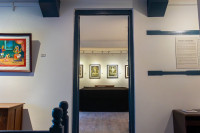
%20(1).jpg&w=200&height=120)
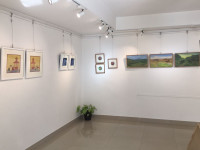
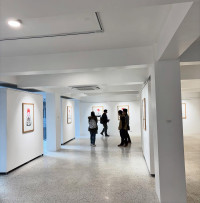
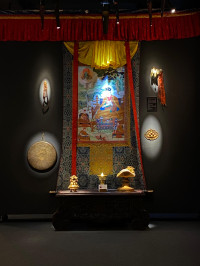
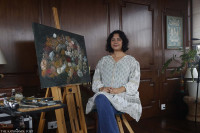
%20(1).jpg&w=300&height=200)
